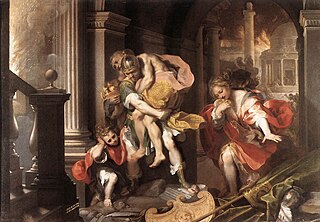 W
WThe Aeneid is a Latin epic poem, written by Virgil between 29 and 19 BC, that tells the legendary story of Aeneas, a Trojan who fled the fall of Troy and travelled to Italy, where he became the ancestor of the Romans. It comprises 9,896 lines in dactylic hexameter. The first six of the poem's twelve books tell the story of Aeneas' wanderings from Troy to Italy, and the poem's second half tells of the Trojans' ultimately victorious war upon the Latins, under whose name Aeneas and his Trojan followers are destined to be subsumed.
 W
W"Annabel Lee" is the last complete poem composed by American author Edgar Allan Poe. Like many of Poe's poems, it explores the theme of the death of a beautiful woman. The narrator, who fell in love with Annabel Lee when they were young, has a love for her so strong that even angels are envious. He retains his love for her even after her death. There has been debate over who, if anyone, was the inspiration for "Annabel Lee". Though many women have been suggested, Poe's wife Virginia Eliza Clemm Poe is one of the more credible candidates. Written in 1849, it was not published until shortly after Poe's death that same year.
 W
W"Anthem for Doomed Youth" is a poem written in 1917 by Wilfred Owen. It incorporates the theme of the horror of war.
 W
W"Ariel" is a poem written by the American poet Sylvia Plath. It was written on her thirtieth birthday, October 27, 1962, and published posthumously in the collection Ariel in 1965. Despite the poem's ambiguity, it is understood to describe an early morning horse-ride towards the rising sun. Scholars and literary critics have applied various methods of interpretation to "Ariel".
 W
WAriel was the second book of Sylvia Plath's poetry to be published. It was originally published in 1965, two years after her death by suicide. The poems in the 1965 edition of Ariel, with their free-flowing images and characteristically menacing psychic landscapes, marked a dramatic turn from Plath's earlier Colossus poems.
 W
WBeachy Head is a long blank verse poem by the English Romantic poet and novelist Charlotte Turner Smith, published in 1807, the year after her death, as part of the volume Beachy Head and Other Poems. The poem imagines events at the coastal cliffs of Beachy Head from across England's history, to meditate on what Smith saw as the modern corruption caused by commerce and nationalism. It was her last poetic work, and has been described as her most poetically ambitious work. As a Romantic poem, it is notable for its naturalist rather than sublime presentation of the natural world.
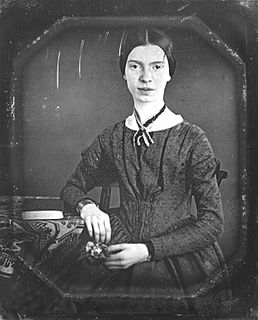 W
W"Because I could not stop for Death" is a lyrical poem by Emily Dickinson first published posthumously in Poems: Series 1 in 1890. Dickinson's work was never authorized to be published so it is unknown whether Because I could not stop for Death was completed or "abandoned". The speaker of Dickinson's poem meets personified Death. Death is a gentleman who is riding in the horse carriage that picks up the speaker in the poem and takes the speaker on her journey to the afterlife. According to Thomas H. Johnson's variorum edition of 1955 the number of this poem is "712".
 W
W"The Bells" is a heavily onomatopoeic poem by Edgar Allan Poe which was not published until after his death in 1849. It is perhaps best known for the diacopic use of the word "bells." The poem has four parts to it; each part becomes darker and darker as the poem progresses from "the jingling and the tinkling" of the bells in part 1 to the "moaning and the groaning" of the bells in part 4.
 W
WBilbo's Last Song is a poem by J. R. R. Tolkien, written as a pendant to his fantasy The Lord of the Rings. It was first published in a Dutch translation in 1973, subsequently appearing in English on posters in 1974 and as a picture-book in 1990. It was illustrated by Pauline Baynes, and set to music by Donald Swann and Stephen Oliver. The poem's copyright was owned by Tolkien's secretary, to whom he gave it in gratitude for her work for him.
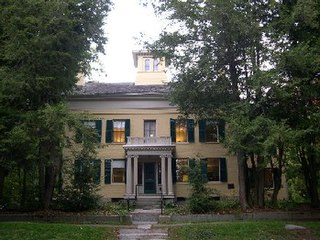 W
W"A Bird came down the Walk" is a short poem by Emily Dickinson (1830–1886) that tells of the poet's encounter with a worm-eating bird. The poem was first published in 1891 in the second collection of Dickinson's poems.
 W
W"Birds and Fishes" is a poem by the American and Californian writer Robinson Jeffers. It is included in The Beginning and the End and Other Poems, published posthumously in 1963.
 W
W"Daddy" is a poem written by American Confessional poet Sylvia Plath. The poem was written on October 12, 1962, four months before her death and one month after her separation from Ted Hughes. It was published posthumously in Ariel during 1965 alongside many other of her poems leading up to her death such as "Tulips” and "Lady Lazarus."
 W
WSonnet X, also known by its opening words as "Death Be Not Proud", is a fourteen-line poem, or sonnet, by English poet John Donne (1572–1631), one of the leading figures in the metaphysical poets group of seventeenth-century English literature. Written between February and August 1609, it was first published posthumously in 1633.
 W
WThis is a list of poems by Emily Dickinson. In addition to the list of first lines which link to the poems' texts, the table notes each poem's publication in several of the most significant collections of Dickinson's poetry—the "manuscript books" created by Dickinson herself before her demise and published posthumously in 1981; the seven volumes of poetry published posthumously from 1890 to 1945; the cumulative collections of 1924, 1930, and 1937; and the scholarly editions of 1955 and 1998.
 W
WDumb Instrument is the title given to the posthumous 1976 anthology of poetry by the English writer and artist Denton Welch. It derives from the fifth line of a sestet which appears on the title page of the anthology only.
 W
WEaster Wings is a poem by George Herbert which was published in his posthumous collection, The Temple (1633). It was originally formatted sideways on facing pages and is in the tradition of shaped poems that goes back to ancient Greek sources.
 W
WThe Fall of Arthur is an unfinished poem by J. R. R. Tolkien that is concerned with the legend of King Arthur. A posthumous first edition of the poem was published by HarperCollins in May 2013.
 W
WHero and Leander is a poem by Christopher Marlowe that retells the Greek myth of Hero and Leander. After Marlowe's untimely death it was completed by George Chapman. The minor poet Henry Petowe published an alternative completion to the poem. The poem was first published five years after Marlowe's demise.
 W
WThe Holy Sonnets—also known as the Divine Meditations or Divine Sonnets—are a series of nineteen poems by the English poet John Donne (1572–1631). The sonnets were first published in 1633—two years after Donne's death. They are written predominantly in the style and form prescribed by Renaissance Italian poet Petrarch (1304–1374) in which the sonnet consisted of two quatrains and a sestet. However, several rhythmic and structural patterns as well as the inclusion of couplets are elements influenced by the sonnet form developed by English poet and playwright William Shakespeare (1564–1616).
 W
W"Hope' is the thing with feathers" is a lyric poem in ballad meter written by American poet Emily Dickinson, The manuscript of this poem appears in Fascicle 13, which Dickinson compiled around 1861. It is one of 19 poems included in the collection, in addition to the poem "There's a certain Slant of light." With the discovery of Fascicle 13 after Dickinson's death by her sister, Lavinia Dickinson, "'Hope' is the thing with feathers" was subsequently published in 1891 in a collection of her works under the title Poems, which was edited and published by Thomas Wentworth Higginson and Mabel Loomis Todd.
 W
W"I like to see it lap the Miles" is a short poem by Emily Dickinson describing an "iron horse" or railroad engine and its train. The poem was first published in 1891.
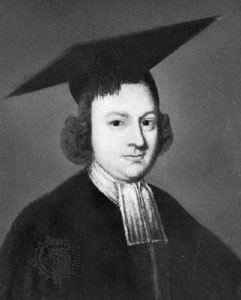 W
WJubilate Agno is a religious poem by Christopher Smart, and was written between 1759 and 1763, during Smart's confinement for insanity in St. Luke's Hospital, Bethnal Green, London. The poem was first published in 1939, under the title Rejoice in the Lamb: A Song from Bedlam, edited by W. F. Stead from Smart's manuscript, which Stead had discovered in a private library.
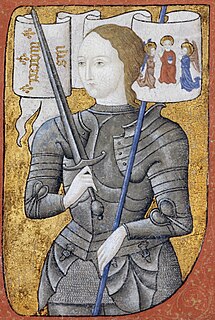 W
WThe Maid of Orleans is a satirical poem by François-Marie Arouet, better known by his pen name, Voltaire. It was first published in 1899, but Voltaire had written it over a century beforehand; while he had started writing the text in 1730, he never completed it. It was translated into English by W. H. Ireland.
 W
W"The Mower's Song" is a pastoral poem by English poet Andrew Marvell, published posthumously in 1681. The work is the last of a series of four poems by Marvell known as the Mower poems. Though the mower in this poem is not named, scholars have stated that all the Mower poems are in the voice of Damon the Mower.
 W
WOrlando Innamorato is an epic poem written by the Italian Renaissance author Matteo Maria Boiardo. The poem is a romance concerning the heroic knight Orlando (Roland). It was published between 1483 and 1495.
 W
WSoldier's Dream is a poem written by English war poet Wilfred Owen. It was written in October 1917 in Craiglockhart, a suburb in the south-west of Edinburgh (Scotland), while the author was recovering from shell shock in the trenches, inflicted during World War I. The poet died one week before the Armistice of Compiègne, which ended the conflict on the Western Front.
 W
WSubh-e-Azadi, also spelled Subh-e-Aazadi or written as Subh e Azadi, is an Urdu language poem by Faiz Ahmed Faiz written in 1947. The poem is often noted for its prose style, marxist perspectives, disappointment, anguish, and critic atmosphere. It centers partition of India after the British rule was ended in the Indian subcontinent, leading to rise different concerns and feelings associated with multi-ethnic origin. The poem primarily revolves around the poet's sentiments and emotions about those people who migrated from one sovereign state to another, leaving their native places. Subh-e-Azadi was written as an expression of solidarity with the people who was living either in India or Pakistan before the region split into two independent nations.
 W
W"There's a certain Slant of light" is a lyrical poem written by the American poet Emily Dickinson. The poem's speaker likens winter sunlight to cathedral music, and considers the spiritual effects of the light. Themes of religion and death are present in the poem, especially in connection to the theological concept of despair.
 W
WToute la Lyre is a posthumous collection of poems by Victor Hugo. The collection includes unpublished poems during his lifetime including love poems to Léonie d’Aunet.
 W
W"A Valediction: Forbidding Mourning" is a metaphysical poem by John Donne. Written in 1611 or 1612 for his wife Anne before he left on a trip to Continental Europe, "A Valediction" is a 36-line love poem that was first published in the 1633 collection Songs and Sonnets, two years after Donne's death. Based on the theme of two lovers about to part for an extended time, the poem is notable for its use of conceits and ingenious analogies to describe the couple's relationship; critics have thematically linked it to several of his other works, including "A Valediction: of my Name, in the Window", Meditation III from the Holy Sonnets and "A Valediction: of Weeping".